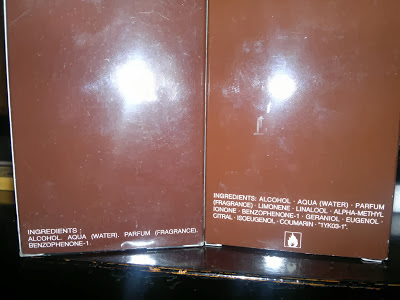During 2003 the EU announced the New Cosmetics Directive (the Old one dating from 1976) to make it more in step with the current times. In the New Directive, namely the "Directive 2003/15/EC" (amending Directive 76/768/EEC) is the rule of mandatory labeling for 26 substances potentially involved with allergies.
It should be noted that this labelling is mandatory BUT is not a prohibition for using those substances. Put simply it is the obligation to indicate on the box or label the presence of a substance that is suspected to cause discomfort or allergies, and only if it is present (in perfumes) concentrations greater than 0.01% .
The Directive was published in early 2003, with mandatory application within two years, so within beginning of 2005.
At this point one might ask: but if the result of this Directive is the compulsory labeling, then the composition of perfumes is due to change? The answer is no, since the Directive it is not a prohibition, but only a sort of "obligation report".
So why it is so important to go and see if there is the "long list" of ingredients on the box?
Because this happens in 2005, i.e. immediately before the world of perfumes bursts in flames.....
Year 2006: Adoption of the IFRA Compliance Program
Year 2007: Implementation of IFRA New Code of Practice
Year 2008: IFRA new laws of restriction
Years 2009-2010: more and more stringent laws of restriction.
Years 2013 ......
List of 26
Fragrance Allergens
--------------------------------------------
--------------------------------------------
Alpha isomethyl ionone
Amyl cinnamal
Amylcinnamyl alcohol
Anisyl alcohol
Benzyl alcohol
Benzyl benzoate
Benzyl cinnamate
Benzyl salicylate
Butylphenyl methylpropional (Lilial)
Cinnamal
Cinnamyl alcohol
Citral
Citronellol
Coumarin
Eugenol
Farnesol
Geraniol
Hexyl cinnamal
Hydroxycitronellal
Hydroxyisohexyl 3-cyclohexene carboxaldehyde (Lyral)
Isoeugenol
Limonene
Linalool
Methyl 2-octynoate
Evernia furfuracea (Treemoss) extract
Evernia prunastri (Oakmoss) extract
---------------------------------------------------------------




No comments:
Post a Comment